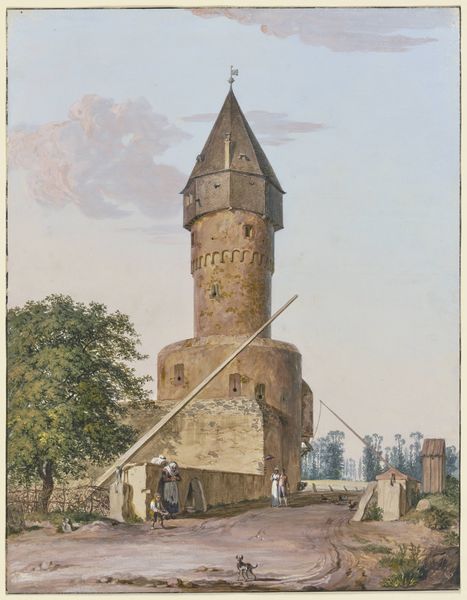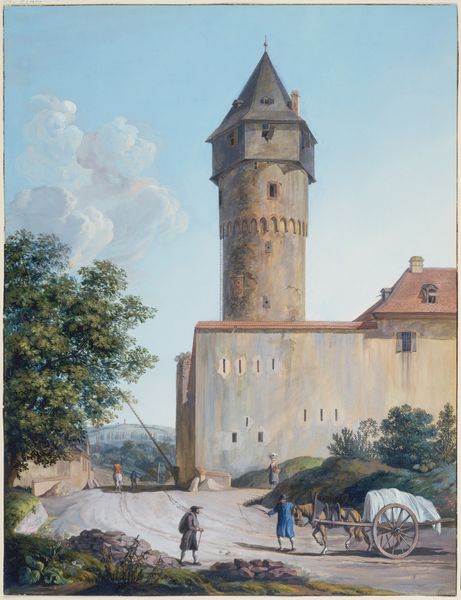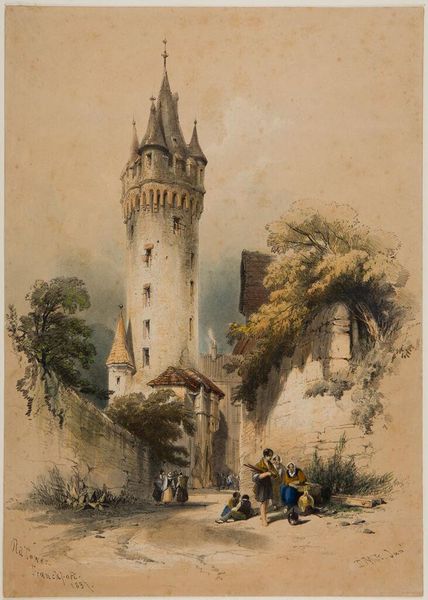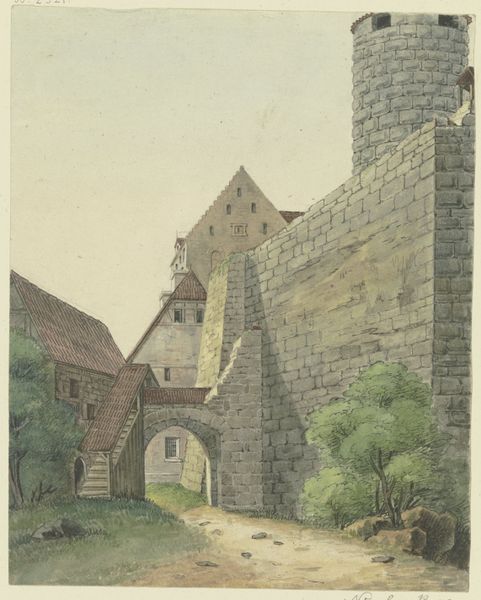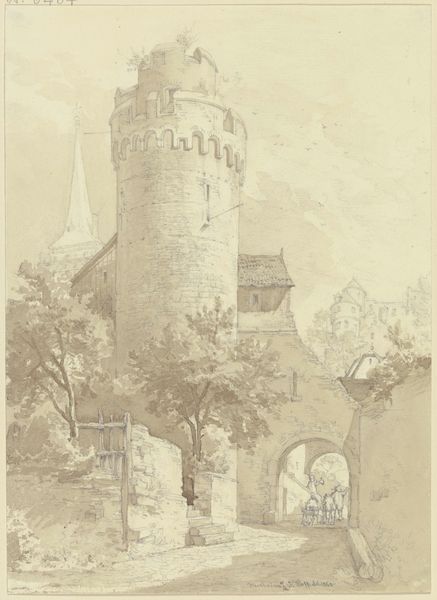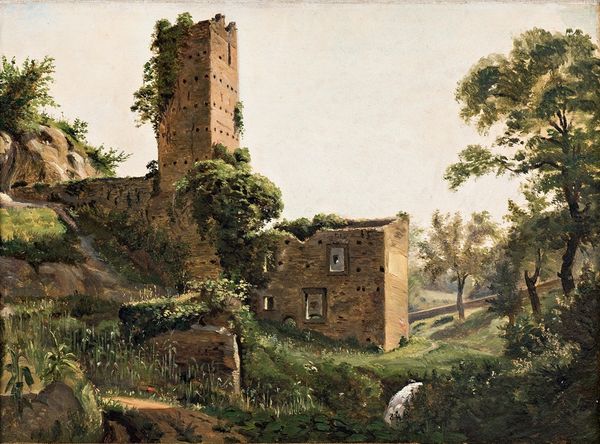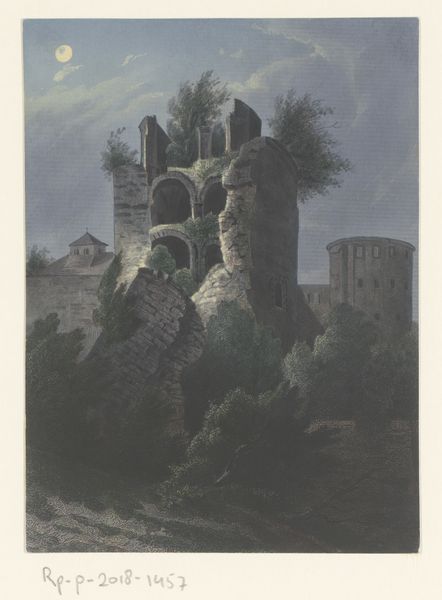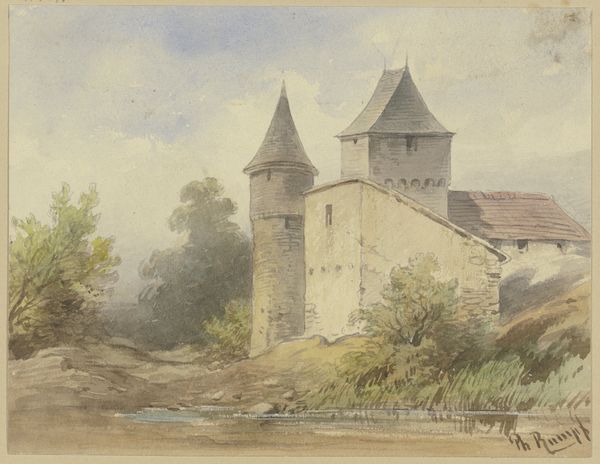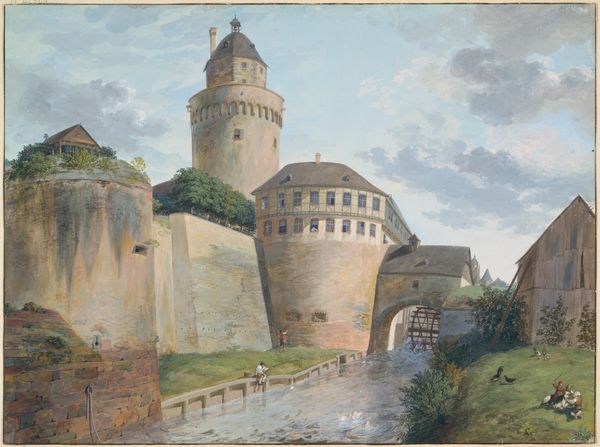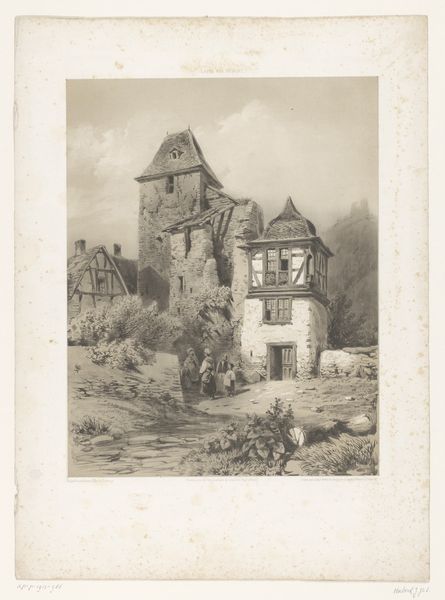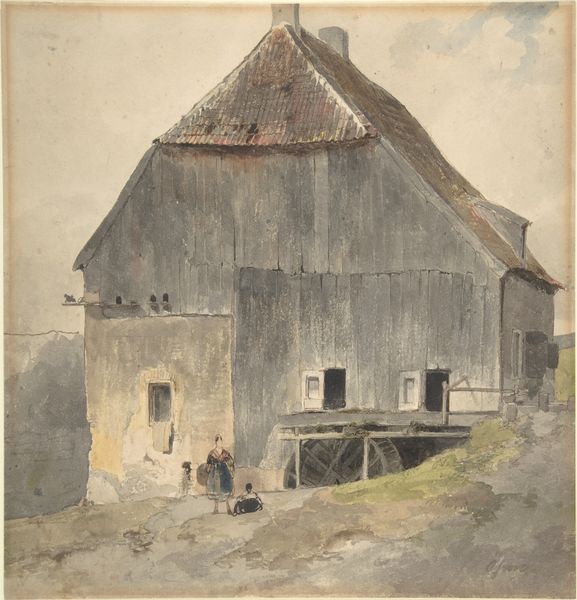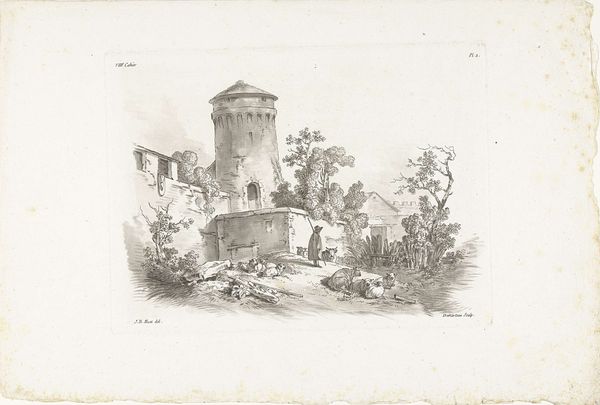
drawing, watercolor, architecture
#
drawing
#
16_19th-century
#
landscape
#
oil painting
#
watercolor
#
cityscape
#
watercolour illustration
#
watercolor
#
architecture
Copyright: Public Domain
Editor: Here we have Anton Radl's "Die Galluswarte zu Frankfurt am Main," a watercolor drawing from the 19th century, held at the Städel Museum. It has a serene quality. The stonework is detailed, really makes you wonder about its construction. What's your perspective on this work, focusing perhaps on its physical creation and its relationship to its environment? Curator: A piece like this allows us to consider the physical realities of image making in relation to both the site represented and its consumption. The watercolor medium itself, how does that affect the portrayal? Its portability speaks to the rise of the artist as a kind of travelling recorder, documenting sites for a consuming public interested in the picturesque. The materiality of the tower is also important – the rough stone construction contrasted with the delicate rendering, hints at class distinctions of labor and consumption, doesn't it? Editor: Yes, the starkness of the tower, in contrast with its setting. That’s thought provoking! I hadn’t considered how the choice of watercolor was influencing the production of imagery for mass consumption. Curator: Exactly. Consider the societal context! Watercolors could be reproduced as prints, spreading this specific view widely. So we're not just looking at a tower, but at an image actively participating in shaping perceptions and perhaps even reinforcing societal structures. Editor: That gives me so much to think about concerning materiality. Now it feels like a historical artifact as much as an artwork. Curator: Precisely, and recognizing that allows us to understand how value is constructed around both the labor involved in producing the artwork and its relationship to larger social and economic forces. This artwork really has an element of social and historical value tied into its production. Editor: I will definitely see art and its cultural context through a completely different lens. Thank you!
Comments
No comments
Be the first to comment and join the conversation on the ultimate creative platform.
